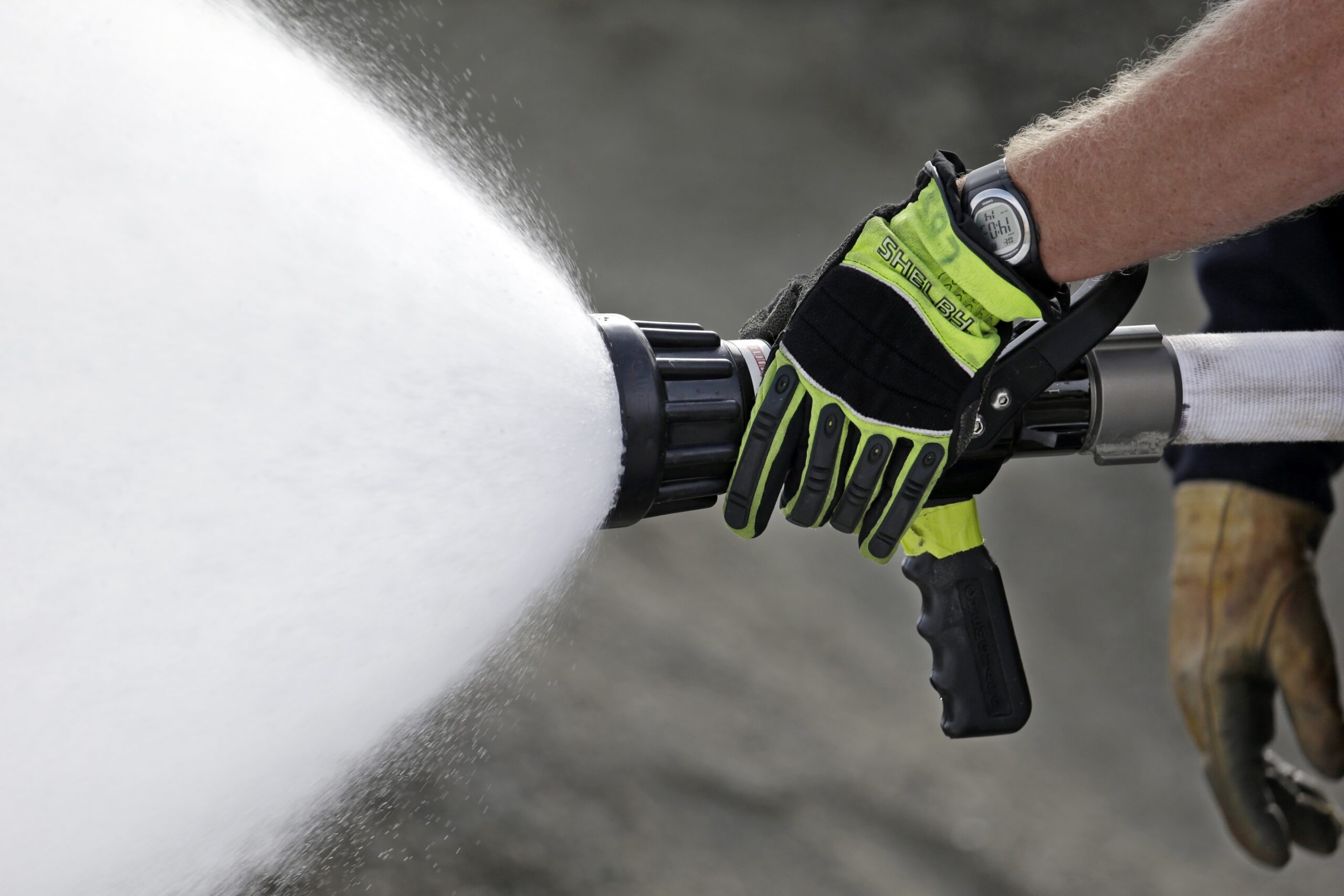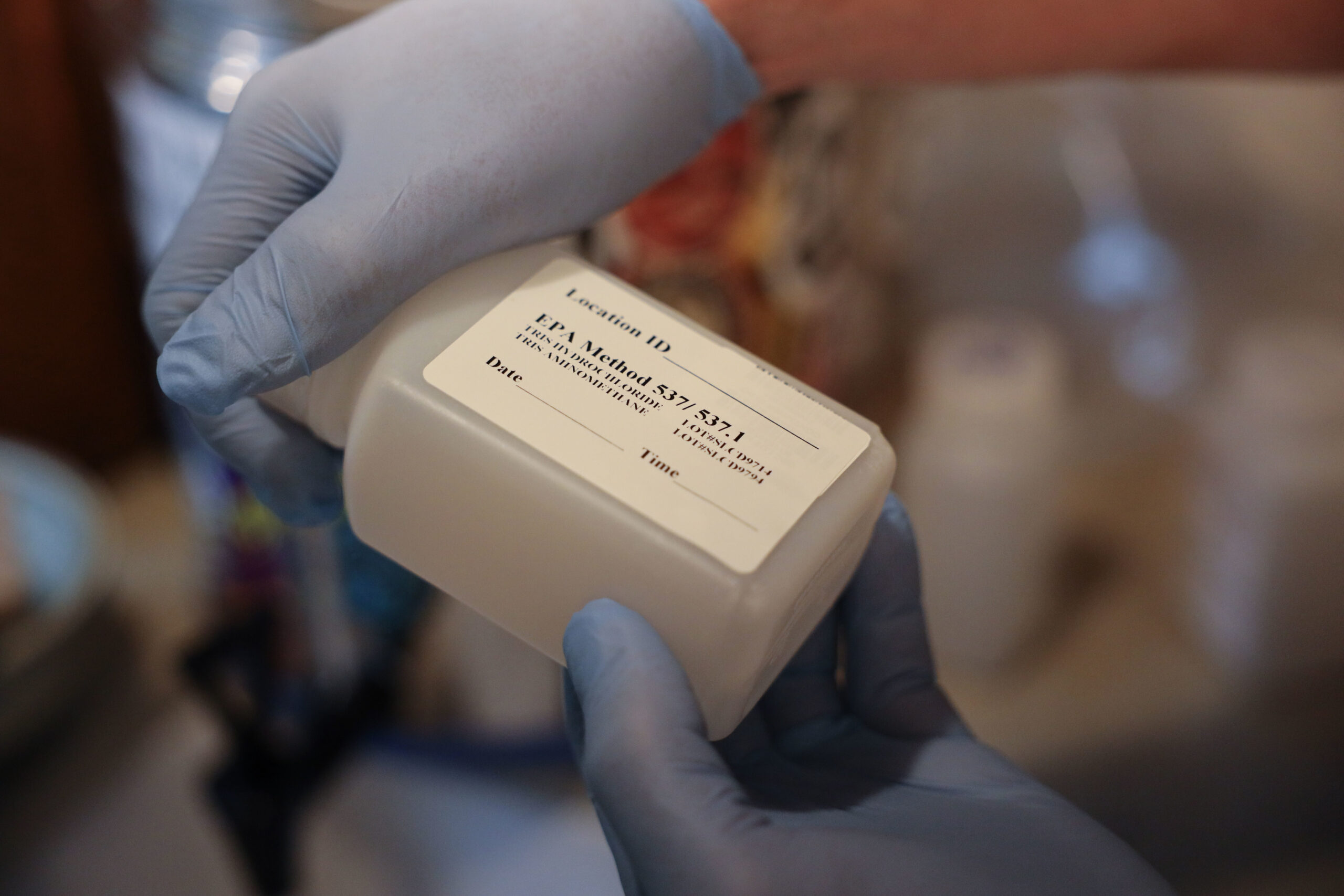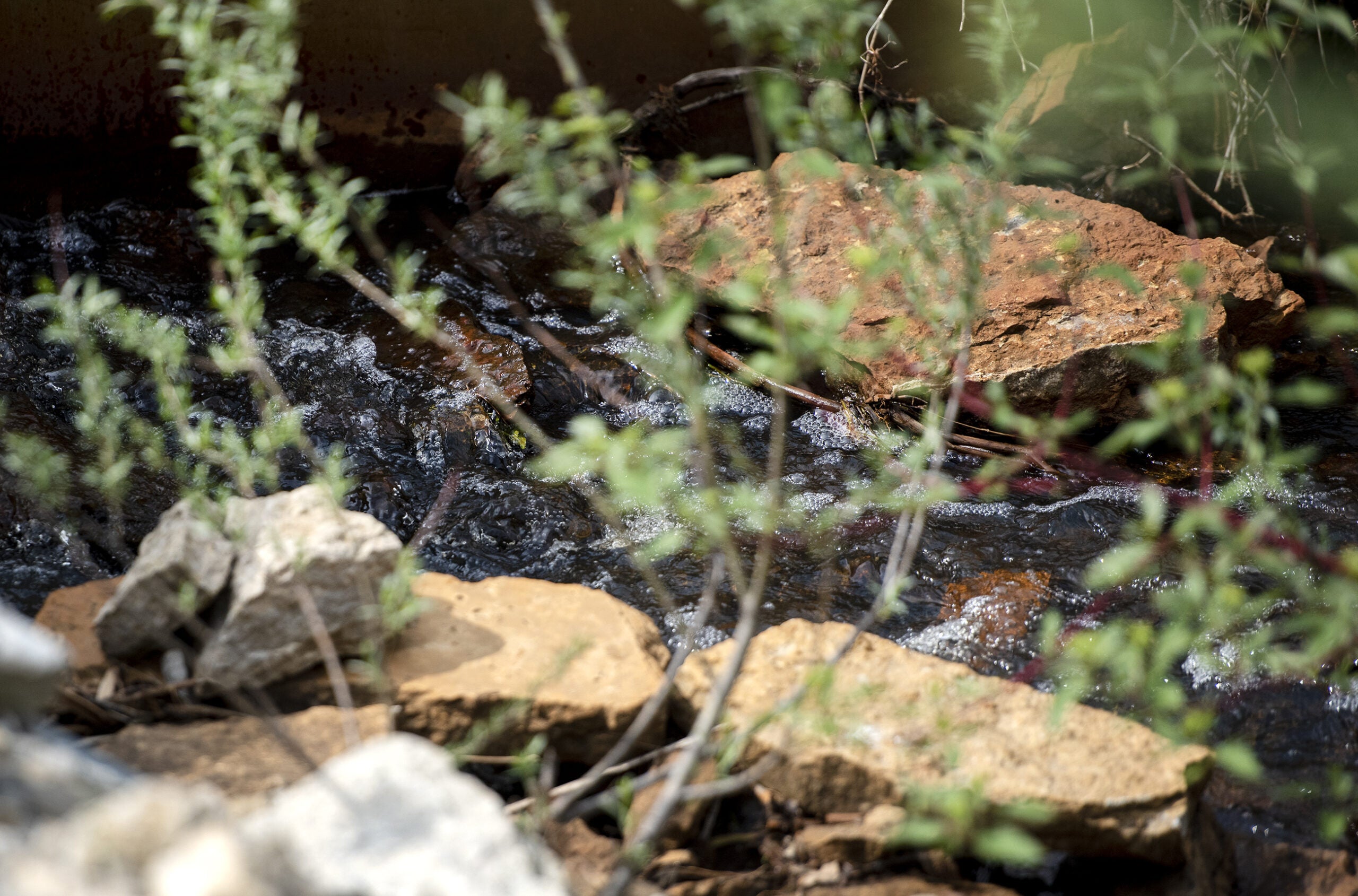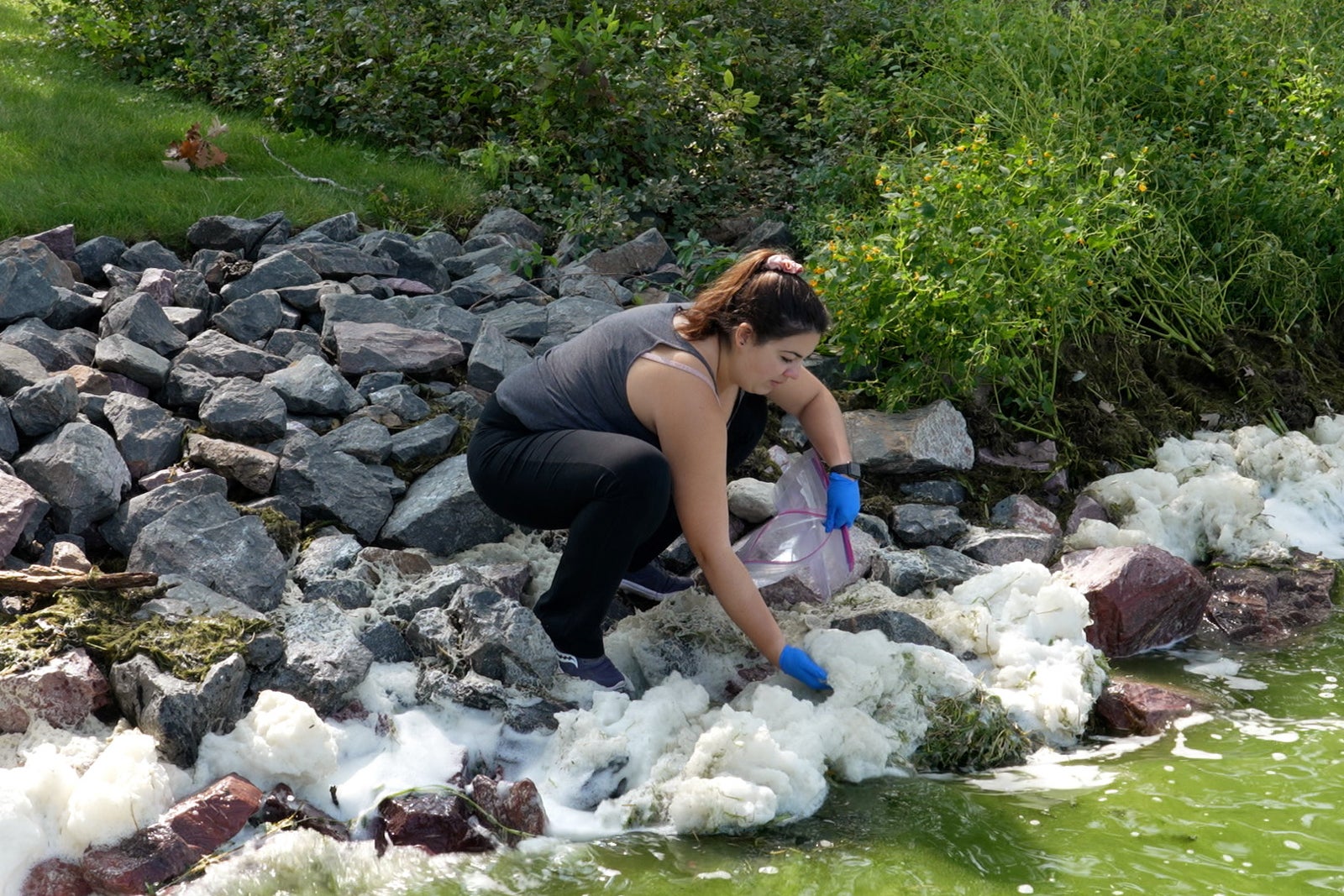The state is moving forward with efforts to collect and dispose of roughly 25,000 gallons of firefighting foam that contain harmful forever chemicals known as PFAS.
The Wisconsin Department of Natural Resources is partnering with the Department of Agriculture, Trade and Consumer Protection to accept bids for the state’s PFAS-containing firefighting foam collection and disposal program. The current two-year state budget provided $1 million for the two agencies to gather and safely dispose of PFAS foam across the state.
PFAS, or perfluoroalkyl and polyfluoroalkyl substances, are a class of thousands of chemicals that don’t break down easily in the environment. Research has shown links to serious health effects that include increased risk of kidney and testicular cancers, thyroid disease and fertility issues. The chemicals have also been tied to reduced response to vaccines.
Stay informed on the latest news
Sign up for WPR’s email newsletter.
The DNR surveyed just under 300 fire departments this spring that reported roughly 25,000 gallons of PFAS foam are available for collection across 64 counties.
“We know increasingly that there’s great interest to get rid of it, so that there’s not the danger of it spilling or being used,” said Mimi Johnson, director of the DNR’s Office of Emerging Contaminants. “And so we’re working to make sure that we can help facilitate that happening.”
Around one-third of the state’s roughly 825 fire departments responded to the most recent survey. State regulators expect the $1 million available under the program won’t cover collection and disposal of all PFAS foam, according to the request for bids.
A prior DNR survey conducted in 2020 estimated all the state’s fire departments had between 63,200 and 96,300 gallons of fluorinated firefighting foam.
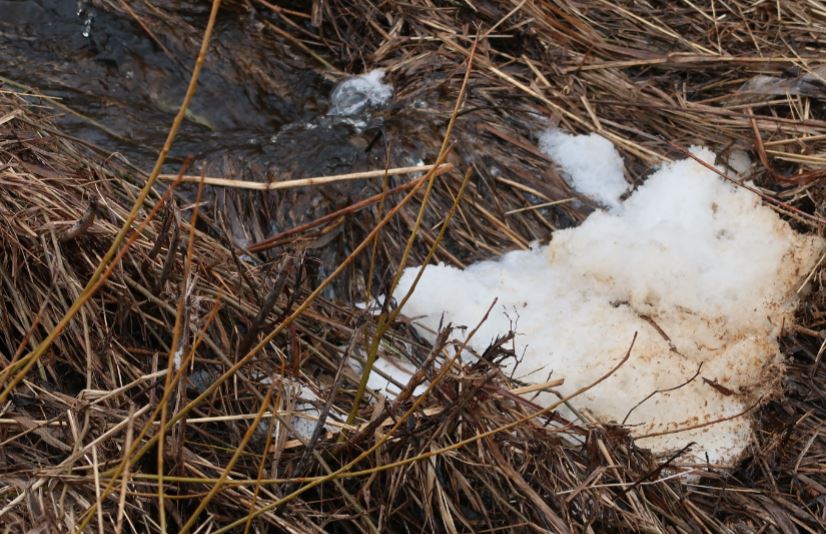
The agencies anticipate most foam will be gathered in two stages at 80 collection sites under the contract that’s awarded. The DNR and DATCP will select and oversee a third-party contractor to conduct the work, and they’re accepting bids through Aug. 11.
Johnson hopes foam collection will begin in the next couple of months. The initial phase of collection and disposal is expected to take up to three months, and all foam must be disposed of in a landfill that meets hazardous waste requirements under the federal Resource Conservation and Recovery Act.
Fire departments obtained PFAS-containing foam, known as Class B firefighting foams, for its ability to efficiently fight fires before widespread awareness surrounding the risks associated with the chemicals. On Wednesday, Wisconsin Attorney General Josh Kaul filed a lawsuit in Dane County Circuit Court against 18 major chemical companies who manufactured or sold products containing PFAS, arguing they knew or should have been aware of the risks.
Mike Stanley, president of the Wisconsin State Fire Chiefs Association, said the collection and disposal program is a relief for cash-strapped fire departments statewide.
“That’s been one of the biggest limitations,” said Stanley. “What most of us have done is taken it out of service, set it aside and been waiting for this process to be approved in the budget, and for DNR to be able to help us assist with that.”
Others like the Madison Fire Department paid almost $9,000 to dispose of foam containing PFAS.
Stanley said the state’s program speeds up collection of the foam and relieves the burden for fire departments who would have otherwise been tasked with individually determining the best contractor and site to dispose of it. But federal law may require continued use of PFAS foam to extinguish fires.
Some airports, like the La Crosse Regional Airport, are required to store firefighting foam that contains PFAS as part of Federal Aviation Administration regulations. Congress required the FAA to come up with alternatives to PFAS foam by October last year, but it has not yet identified suitable replacements.
Johnson said the agency is excited to support local fire departments and communities through the state program.
“It was the single item that made it through the budget this last period in investing in PFAS,” said Mimi Johnson, director of the DNR’s Office of Emerging Contaminants. “I think the more that we can take PFAS that we know is a potential contaminant out of the cycle, the better.”
Gov. Tony Evers included $1 million for the collection effort in his budget proposal to lawmakers last year, as well as a $10 million grant program for local governments to address PFAS contamination. Evers also proposed creating 11 new positions to carry out the state’s action plan for the chemicals in addition to funding for PFAS testing in public water supplies. Republican lawmakers stripped money for Evers’ other PFAS proposals from the final budget.
In 2020, Evers also signed a Republican bill into law that barred the use of PFAS foam except in emergencies and limited circumstances. The DNR later issued an emergency rule to outline appropriate testing, treatment, storage and disposal to comply with that law.
Republican lawmakers on the Legislature’s Joint Committee for Review of Administrative Rules later weakened that rule by eliminating indicator levels for PFAS. Those levels would have been used to gauge whether a treatment system is effective at removing the chemicals from wastewater containing the foam.
Wisconsin Public Radio, © Copyright 2025, Board of Regents of the University of Wisconsin System and Wisconsin Educational Communications Board.
